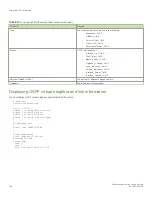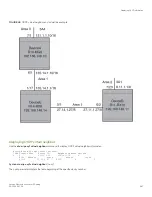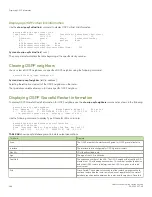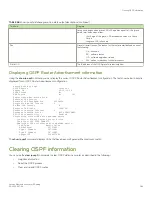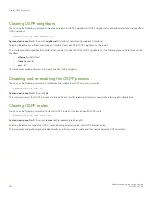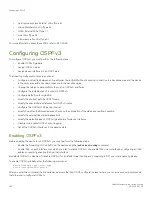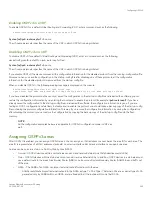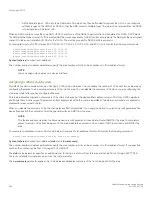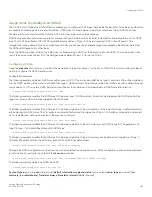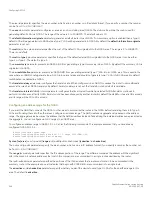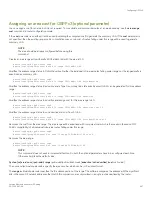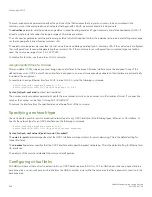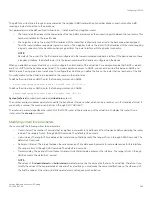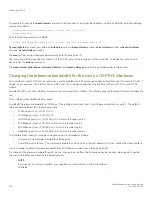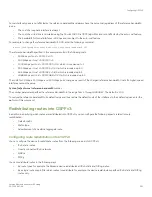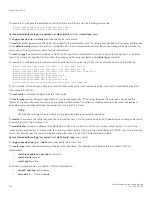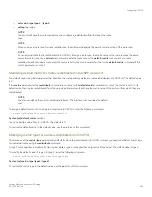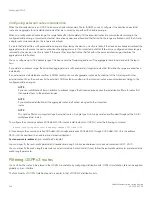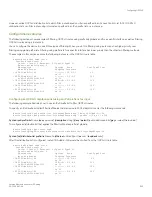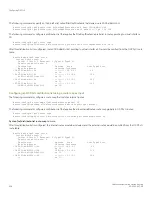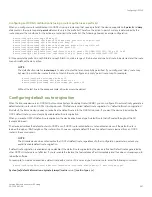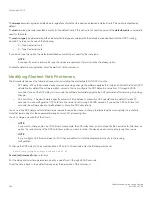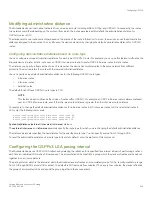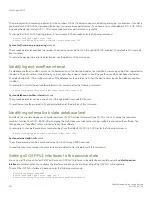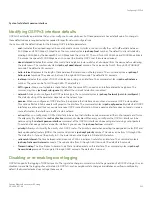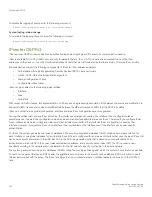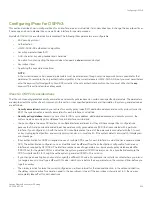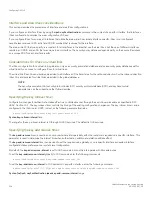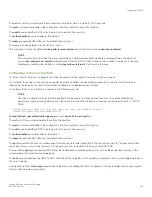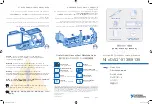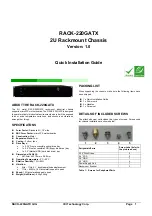
For example, to change the
dead-interval
parameter to 60 seconds on the virtual links defined on ABR1 and ABR2, enter the following
command on ABR1.
device(config-ospf6-router)# area 1 virtual-link 10.157.22.1
dead-interval 60
Enter the following command on ABR2.
device(config-ospf6-router)# area 1 virtual-link 10.0.0.1 dead-interval 60
Syntax:
[no] area
{
number
|
ipv4-address
}
virtual-link
router-id
[
dead-interval
seconds
|
hello-interval
seconds
|
retransmit-interval
seconds
|
transmit-delay
seconds
]
The
area
number
and
ipv4-address
parameters specify the transit area ID.
The
router-id
parameter specifies the router ID of the OSPF router at the remote end of the virtual link. To display the router ID on a
device, enter the
show ip
command.
The
dead-interval
,
hello-interval
,
retransmit-interval
, and
transmit-delay
parameters are described earlier in this section.
Changing the reference bandwidth for the cost on OSPFv3 interfaces
Each interface on which OSPFv3 is enabled has a cost associated with it. The device advertises its interfaces and their costs to OSPFv3
neighbors. For example, if an interface has an OSPF cost of 10, the device advertises the interface with a cost of 10 to other OSPF
routers.
By default, OSPF cost of an interface is based on the port speed of the interface. The software uses the following formula to calculate the
cost.
Cost = reference-bandwidth/interface-speed
By default, the reference bandwidth is 100 Mbps. If the resulting cost is less than 1, the software rounds the cost up to 1. The default
reference bandwidth results in the following costs:
•
10 Mbps port cost = 100/10 = 10
•
100 Mbps port cost = 100/100 = 1
•
1000 Mbps port cost = 100/1000 = 0.10, which is rounded up to 1
•
155 Mbps port cost = 100/155 = 0.65, which is rounded up to 1
•
622 Mbps port cost = 100/622 = 0.16, which is rounded up to 1
•
2488 Mbps port cost = 100/2488 = 0.04, which is rounded up to 1
The interfaces that consist of more than one physical port is calculated as follows:
•
LAG group- The combined bandwidth of all the ports.
•
Virtual (Ethernet) interface - The combined bandwidth of all the ports in the port-based VLAN that contains the virtual interface.
You can change the default reference bandwidth from 100 Mbps to a value from 1 through 4294967.
If a change to the reference bandwidth results in a cost change to an interface, the Brocade device sends a link-state update to update
the costs of interfaces advertised by the Brocade device.
NOTE
If you specify a cost for an interface, your specified cost overrides the cost that the software
calculates.
Configuring OSPFv3
FastIron Ethernet Switch Layer 3 Routing
300
53-1003627-04
Summary of Contents for FastIron SX 1600
Page 2: ...FastIron Ethernet Switch Layer 3 Routing 2 53 1003627 04 ...
Page 16: ...FastIron Ethernet Switch Layer 3 Routing 16 53 1003627 04 ...
Page 20: ...FastIron Ethernet Switch Layer 3 Routing 20 53 1003627 04 ...
Page 142: ...FastIron Ethernet Switch Layer 3 Routing 142 53 1003627 04 ...
Page 150: ...FastIron Ethernet Switch Layer 3 Routing 150 53 1003627 04 ...
Page 200: ...FastIron Ethernet Switch Layer 3 Routing 200 53 1003627 04 ...
Page 214: ...FastIron Ethernet Switch Layer 3 Routing 214 53 1003627 04 ...
Page 350: ...FastIron Ethernet Switch Layer 3 Routing 350 53 1003627 04 ...
Page 476: ...FastIron Ethernet Switch Layer 3 Routing 476 53 1003627 04 ...
Page 588: ...FastIron Ethernet Switch Layer 3 Routing 588 53 1003627 04 ...

